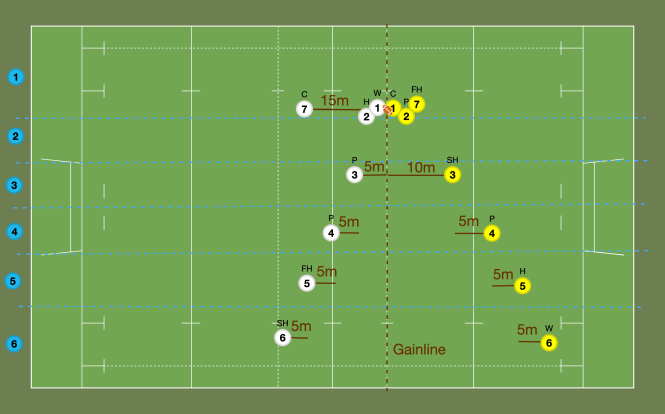Skill Level Modifiers
Skill Level Modifiers
Total Rating = (Skill Level + Aggression) x Energy + (PAW Skill Level/10) + Momentum + Home Advantage +/- Attack/Defence modifiers +/- Less players modifier
Total Rating = sum of its parts (Question - should it be limited to, say 95)
Skill Level = number between 20 and 90
Aggression = (if chosen by the Coach) an addition of either +5 (Tough) or +10 (Brutal) (JMP and STR only)
Energy = percentage that falls during a game due to fatigue and rises when rested
PAW Skill Level = number between 20 and 90 (added to JMP, HND, PCE only)
Momentum = a number that starts at 0 but can increase or decrease by 5 (HND, PCE only).
Home Advantage = +5 addition to teams playing in their home tournament (KCK, JMP, STR, PCE only)
Less players modifiers = If a team has one or more players less on the pitch than their opponents because of cards (or injury) then they lose -10 per player to their total rating for PCE and HND. Conversely, they receive an additional +10 for each additional player they have on the pitch.
Aggression, Injuries and Cards
When checking for a foul, the odds are 1% for a team playing No aggression, 3% for a team playing Tough and 7% for a team playing Brutal.
When a foul is called the likelihood of injury and cards depends on the aggression levels adopted by team. Note that the chance of a card should double if his opponent is injured and treble if the injury is serious. Injuries take you out of the game. Normal injuries also impact the next 1-2 sessions. Serious injuries the next 3-5 sessions. [Note: you may want to play with these numbers]
| Injury | Serious Injury | Yellow Card | Red Card | |
| None / None | 0.4% / 0.4% | 0.1% / 0.1% | 0.5% / 0.5% | 0.1% / 0.1% |
| None / Tough | 1% / 0.4% | 0.25% / 0.1% | 0.5% / 1% | 0.1% / 0.2% |
| None / Brutal | 1.6% / 0.8% | 0.4% / 0.2% | 0.5% / 2% | 0.1% / 0.4% |
| Tough / Tough | 2% / 2% | 0.5% / 0.5% | 1.5% / 1.5% | 0.3% / 0.3% |
| Tough / Brutal | 3% / 2% | 0.75% / 0.5% | 2% / 2.5% | 0.3% / 0.5% |
| Brutal/Brutal | 4% / 4% | 1% / 1% | 3% / 3% | 0.6% / 0.6% |
Attack and Defence Modifiers
Coaches of teams can ask their team to play Flat or Deep in attack, and Blitz or Drift in defence. In both cases, the option is how close you stand to the line of scrimmage (called the ‘gainline’ in rugby) after a ruck or set piece. For Flat and Blitz, the first receiver/defender in the line stands very close to the line (5m away). Each player in the line stands a further 5m back. For Deep and Drift the first receiver/defender stands further back from the line (10m away) but each subsequent player in the line stands a further 5m back (see diagram below).
Flat v Blitz favours the defence. Defence modifier of -5 applied
Flat v Drift favours the attack. Attack modifier of +5 applied.
Deep v Blitz favours the attack. Attack modifier of +5 applied.
Deep v Drift favours the defence. Defence modifier of -5 applied.
Note: thematically these modifiers should not apply to a player running with the ball who has broken the line.
Note: there are also a few other implications of which approach is adopted:
Flat v Blitz. Gives defenders a chance to intercept passes but, at the risk of deliberately knocking on which would give away a penalty and yellow card.
Blitz is vulnerable to a short kick against both Flat and Deep.
In the diagram below (not to scale).
- Yellow has taken the ball into a RUCK. The Coach has chosen a Deep Attack, so the first receiver is standing 10m back from the gainline. Each subsequent attacker in the line is 5m further back. The Sweeper has entered the RUCK to pass the ball.
- White is playing a Blitz Defence, so the first defender is standing 5m back from the gainline. Each subsequent defender in the line is a further 5m back. The White Sweeper stands 15m back from the gainline to cover any potential line break.
- After the ball is passed both lines will run towards each other. A Deep Attack will have lost more territory than a Flat Attack because they have passed the ball back further. However, they have advantage over a Blitz Defence because the receiver has more time on the ball before deciding what action he is going to take.
